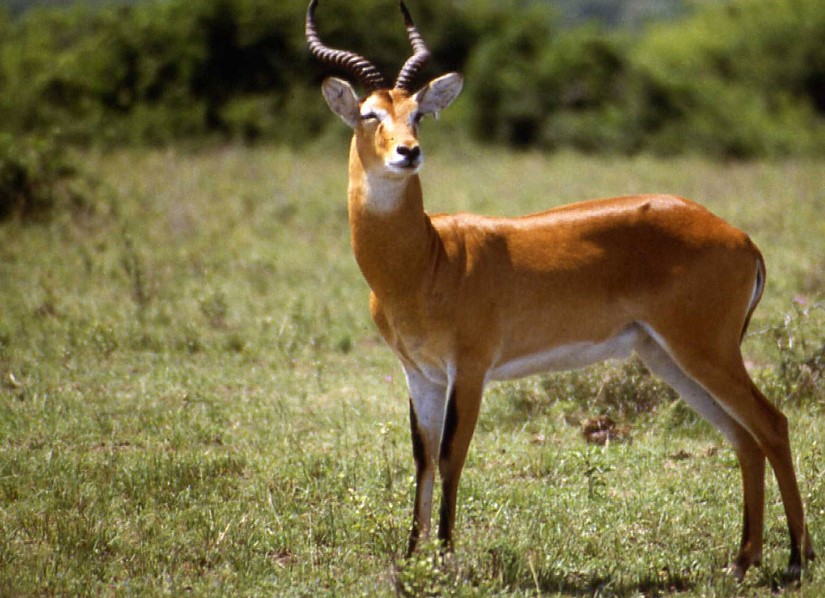Uganda’s Savannah: A Natural Wonder – Nestled in the heart of East Africa, Uganda is a land of unparalleled natural beauty and biodiversity. While it is often celebrated for its lush forests, serene lakes, and awe-inspiring mountains, Uganda’s savannahs are a hidden treasure that deserves equal attention.
These vast expanses of grassland offer a unique and diverse ecosystem that supports a wide array of wildlife and plays a crucial role in the nation’s ecological balance. In this exploration, we delve into the enchanting world of Uganda’s savannahs, uncovering their significance, biodiversity, and the challenges they face in an ever-changing world.
A Tapestry of Diversity
Uganda’s savannahs, primarily located in the northern and eastern regions, are a tapestry of biodiversity. These vast grasslands extend as far as the eye can see, interrupted only by the occasional acacia tree and winding river.
One of the most iconic savannahs in Uganda is the Queen Elizabeth National Park, a UNESCO Biosphere Reserve and a testament to the country’s commitment to conservation.
The biodiversity in Uganda’s savannahs is staggering. These landscapes are home to an impressive array of flora and fauna, each playing a vital role in maintaining the delicate ecological balance. The grasses that carpet the savannah provide sustenance for herbivores like elephants, buffaloes, and antelopes.
In turn, these herbivores attract predators such as lions, leopards, and cheetahs. The birdlife is equally impressive, with over 600 species soaring above the grasslands, including the regal African fish eagle.
Perhaps one of the most famous residents of Uganda’s savannahs is the endangered Rothschild’s giraffe, often spotted lazily munching on acacia leaves. The Ugandan Kob, a subspecies of the African antelope, is another iconic inhabitant. Conservation efforts have ensured that these species continue to thrive in their natural habitat, a testament to Uganda’s commitment to preserving its unique ecosystems.
The Role of Savannahs in Conservation
Beyond their aesthetic appeal, Uganda’s savannahs serve a vital role in the broader conservation efforts in East Africa. These grasslands provide crucial habitats for wildlife, acting as a refuge for species under threat from poaching, habitat destruction, and climate change. They also play a pivotal role in maintaining the ecological balance of the region.
Savannahs are often seen as the lifeblood of Africa, providing sustenance to countless herbivores. The migration patterns of animals in these regions, such as the annual wildebeest migration, are not just a spectacle but a critical component of the ecosystem. The animals’ movement helps disperse seeds, fertilize the soil, and control vegetation, ensuring the savannah remains healthy and vibrant.
Moreover, the savannahs of Uganda are part of a larger network of protected areas that allow for the free movement of wildlife, preventing inbreeding and bolstering genetic diversity. This interconnectedness of ecosystems is essential for the long-term survival of many species.
Challenges Facing Uganda’s Savannahs
Despite their significance, Uganda’s savannahs face numerous challenges that threaten their existence. One of the most pressing issues is habitat loss due to agriculture, infrastructure development, and human settlement. As the human population continues to grow, the pressure on these pristine landscapes intensifies, leading to encroachment and habitat fragmentation.
Poaching remains a persistent problem in the region, fueled by the illegal wildlife trade. Iconic species such as elephants and rhinos are targeted for their ivory and horns, leading to a decline in their populations. Conservation organizations and governments are working tirelessly to combat poaching, but the battle is far from won.
Climate change is yet another threat. Increasing temperatures and altered rainfall patterns can disrupt the delicate balance of the savannah ecosystem. Droughts become more frequent, grasslands dry up, and the availability of water becomes scarce, impacting both wildlife and the people who depend on these ecosystems for their livelihoods.
Conservation Efforts and Hope for the Future
In the face of these challenges, Uganda has taken significant strides to protect and conserve its savannahs. Strong legislation, increased law enforcement, and collaboration with international organizations have resulted in a decline in poaching. Local communities are increasingly involved in conservation efforts, recognizing the value of preserving their natural heritage.
Efforts to combat habitat loss and climate change are also underway. Sustainable land-use practices are being promoted, and reforestation projects aim to restore degraded areas. Additionally, conservationists are studying the potential impacts of climate change on savannah ecosystems to develop strategies for adaptation and mitigation.
The government of Uganda, in partnership with NGOs and international organizations, is working towards creating a more sustainable future for the country’s savannahs. Tourism, managed responsibly, can provide a source of income for local communities and incentives for the preservation of these natural wonders.
In Conclusion, Uganda’s savannahs are a testament to the incredible biodiversity and natural beauty that East Africa has to offer. These vast grasslands are not just a picturesque landscape but a critical part of the planet’s ecological tapestry. They support an array of wildlife, provide livelihoods for local communities, and play a pivotal role in conservation efforts.
However, the challenges facing Uganda’s savannahs are substantial, from habitat loss and poaching to the impacts of climate change. Yet, there is hope. Through concerted efforts in conservation, sustainable development, and community engagement, Uganda is working towards ensuring that these savannahs remain a source of wonder and inspiration for generations to come. It is a testament to the resilience of nature and the determination of people to protect the world’s natural treasures.



Comment (0)